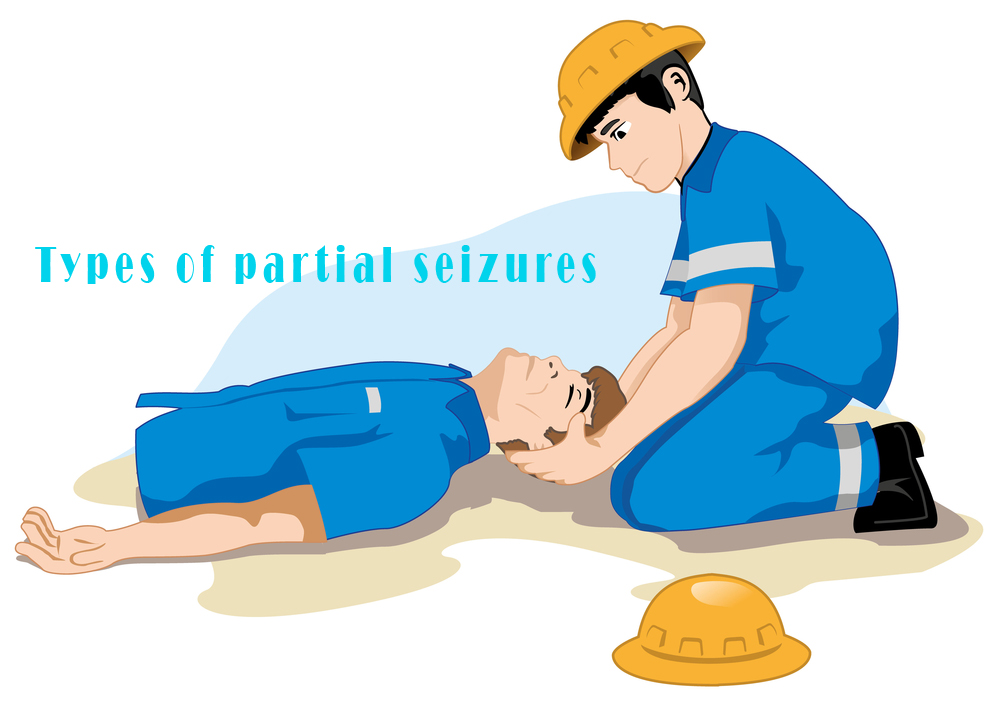What are partial seizures: types and characteristics

Partial seizures develop with the excitation of neurons of one restricted area of the cortex. The appearance of certain clinical manifestations is due to the mobilization of the concurrent part of the cortex, which reflects the development of pathological changes in it.
Violations can be provoked by various causes. The appearance of specific neurologic symptoms observed during a seizure allows determining the area of the cortex responsible for its development.
Types of partial seizures
Partial seizures can be simple if their development is not accompanied by a violation of consciousness or orientation and complex if such signs are present.
- Simple seizures: The development of simple seizures is preceded by the appearance of an aura. In neurology, its character in many ways helps in identifying the location of the lesion focus. For example, the appearance of a motor aura, which is characterized by a person running or turning around; the appearance of a visual aura – sparks, flashes; and an auditory aura.
- Aphasic seizures: The appearance of aphasia refers to the first manifestation of pathology, and the symptoms of speech impairment develop for months. The appearance of epileptic seizures is observed several weeks after the onset of speech impairment.
- Dysmnestic seizures: This state is characterized by the development of paroxysm: “Already seen” (the patient seems to have seen it already), “Already heard” (there is a duplication of feelings that are close to the patient’s personality), “Already experienced” (the words of songs or conversations sound familiar to the patient, which he (she) hears or takes part). At the end of the seizure, malaise and drowsiness occur.
- Ideator seizures: Such seizures are accompanied by strange or servile thoughts because of what the patient focuses on the same thought and cannot switch to another topic.
- Emotional affective seizures: They are characterized by an uncaused and sudden fear, combined with the idea of self-blame and other psycho-vegetative crises with the dominance of panic attacks.
- Illusory seizures
- Hallucinatory seizures
- Complex partial seizures: Their development is accompanied by involuntary motor activity with the performance of actions of varying complexity against the background of the twilight confusion of consciousness. They continue for about 30 minutes and end with full amnesia.
What does medicine offer?
Drug treatment consists of:
- anticonvulsants – Neurontin, Phenobarbital, Diphenin;
- neurotropic drugs;
- psychoactive and psychotropic drugs.
Other methods of treatment include:
- surgical intervention;
- the Vojta method;
- ketogenic diet;
- elimination of predisposing agents;
- osteopathic treatment.
With the correct description of the symptoms of an aura and seizure, it is easier for the attending physician to identify the type of predisposing pathology and to prescribe an adequate treatment.
Treatment with Neurontin
Neurontin is recognized as the best remedy for treating partial seizures all over the world. It is available in the form of capsules and tablets for oral use. The medication is sold in contour cell packs (10 capsules/tablets in each), placed in cardboard packages of 2, 5 or 10 pieces.
The use of Neurontin is indicated in the treatment of neuropathic pain in adults, for the monotherapy of partial seizures with secondary generalization in children and adults. Also, the drug Neurontin can be used as an additional drug in the treatment of partial seizures in children of three years old.
Side effects of Neurontin
When treating partial seizures with Neurontin, this medication may cause the appearance of various side effects:
back pain, fatigue, fever, headache, viral infection, peripheral edema, weight gain, asthenia, malaise, edema of the face;
constipation, dental diseases, diarrhea, dyspepsia, increased appetite, dry mouth or throat, nausea or vomiting, abdominal pain, flatulence, anorexia, gingivitis;
symptoms of vasodilation or hypertension;
leukopenia, purpura;
fractures, myalgia and arthralgia;
amnesia, ataxia, confusion, impaired coordination, depression, dysarthria, emotional lability, insomnia, nervousness, nystagmus, drowsiness, disturbance of thinking, tremor, muscle twitching, dizziness, hyperkinesia;
strengthening, weakening or lack of reflexes, anxiety, paresthesia, hostility;
abrasions, acne, skin itching, skin rashes;
cough, pharyngitis, rhinitis, pneumonia;
amblyopia, diplopia, visual impairment;
urinary tract infections, impotence.